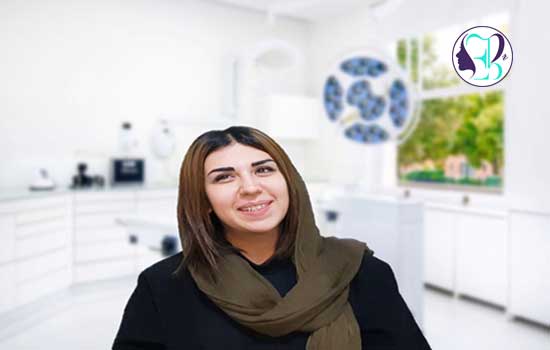Cleft lip and palate

Cleft lip and palate

What is cleft lip and palate?
Cleft lip and palate is the presence of a cleft in the mouth and face, which is seen from birth as a small seam or a large gap in the lip or roof of the mouth. Cleft lip and palate is one of the most common birth defects.
Cleft lip and palate are both treatable conditions, and most children undergo surgery and treatment within the first few years of life.
How is a cleft palate created?
During the first 6 to 10 weeks of pregnancy, the bones and tissues of the baby's mouth, nose, and upper jaw are connected to form the roof of the mouth and the upper lip. If the lips and mouth are not fully fused, a gap will remain in the palate.
The cleft lip may be very small, with only one seam at the edge of the lip, or extend to the nose. Cleft lip may also extend to the gums.
Cleft palate occurs in a variety of sizes and may be limited to the soft palate, which is close to the back of the throat, or may be seen as a hole in the palate in the front of the mouth. Most cleft lip and palate fall into one of three groups:
1- Cleft lip alone, which is more common in boys
2- Cleft palate alone, which is more common in girls
3- Cleft lip and palate together, which is more common in boys
Cleft lip and palate usually appear when the baby is born, but some can be seen on prenatal ultrasound. Cleft palate is more difficult to see before birth and is diagnosed after birth when it is fully examined inside the baby's mouth. The cleft may be on one side of the mouth, called a unilateral, or it may be on either side of the mouth, which is called a bilateral cleft.
What causes cleft lip and palate?
The exact cause is not known, but many cleft lip and palate appear to be affected by a combination of genetic and environmental factors, such as the use of certain medications or vitamin deficiencies. Cleft lip and palate may be transmitted through one or more maternal or paternal genes.
Taking certain medications, such as some antiepileptic drugs during pregnancy, increases the chance of cleft lip or cleft palate in the baby. Also, mothers who do not get enough nutrients during pregnancy (such as folic acid deficiency) are more likely to have cleft lip and palate. Exposure of the mother to certain chemicals can also lead to cleft lip and palate in the baby.
Women who smoke, use drugs or alcohol during pregnancy are more likely to have cleft lip and palate in their baby. Research shows that cleft lip and palate are more likely to be found in children of mothers who have consumed alcohol for a short time in the first few weeks of pregnancy.
Does cleft lip and palate cause other problems?
The presence of cleft lip and palate affects the function of the child's mouth and face. Babies born with cleft lip and palate are more likely to have difficulty eating and may have hearing, dental and speech problems.
Eating problems
Children with cleft lip and palate usually do not have a feeding problem, but if there is a cleft palate, it will be difficult for the baby to breastfeed. Normally, the palate does not allow fluid and food to enter the nose, but in children with cleft palate, a large amount of air is swallowed and food enters the nose through the mouth.
This condition makes it difficult for the baby to suckle (either from the breast or the bottle). As a result, a baby with a cleft palate may need a special type of pacifier or bottle to pump milk into his mouth. Mothers who are breastfeeding a baby with a cleft palate should seek help from breastfeeding counselors for guidance.
Children who have difficulty breastfeeding should be checked regularly by a doctor to make sure they are gaining enough weight.
Accumulation of fluid in the middle ear and hearing loss
Many children with cleft palate have difficulty accumulating fluid in the middle ear. In these conditions, fluids do not pass through the Eustachian tube, which can lead to ear infections or even hearing loss.
Therefore, children with cleft palate usually need to have an ear tube inserted into the tympanic membrane to help drain the fluid that has accumulated inside the ear and improve their hearing. Also, if there is a hearing problem, the child should be checked once or twice a year
Dental problems
Children with cleft lip and palate often have dental problems. The most common of these problems are small teeth, extra teeth, cavities, or protruding teeth.
These children may have defects in the gums or ridges of the jawbone (the bone that holds and supports teeth). Defects in the jawbone can lead to displacement, tilting or rotation of permanent teeth, or preventing permanent teeth from coming out properly.
For this reason, it is necessary for these children to be seen regularly by a dentist who specializes in cleft lip and palate. The dentist examines the growth condition of the child's mouth and teeth and immediately identifies any problems and treats them if necessary.
Speech and pronunciation problems
Children with cleft palate have fewer pronunciation problems than children with cleft lip and palate. About one in five children with a cleft palate has speech problems after surgery.
In most cases, this problem is in the form of nasal sound, as if the child is talking through the nose. This is because the palate did not move well enough to prevent air leaking from the nose.
Children with cleft palate may have other speech problems that are not related to cleft palate, such as age-related errors. Sometimes cleft palate causes difficulty in pronouncing some letters, especially the letters s, sh, ch, and c.
How is cleft lip and palate treated?
The method of treatment depends on the situation and condition. You may need the following specialists for treatment:
• plastic surgeon
• ENT specialist
• Oral surgeon
• Dentist
• Orthodontist
• Speech therapist
• Audiometer
• Nurse
• Psychologist
• Geneticist
Immediate dental implants
Dental implants + Tooth crown + immediate in one day
A Dental Implant or fixture replaces a lost tooth the size of a tooth root.
After the implant is welded, the casting is done and after the prosthesis is made in the laboratory, the crown is delivered to the patient; Sometimes this process can be done even in one day.
If you have lost one or more of your teeth and need more information,
So contact us as soon as possible to schedule a check-up and consultation.
















